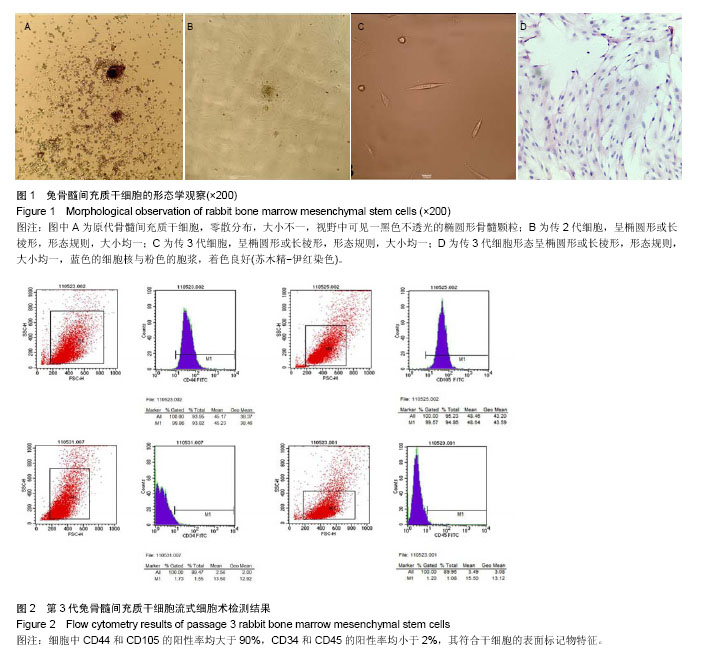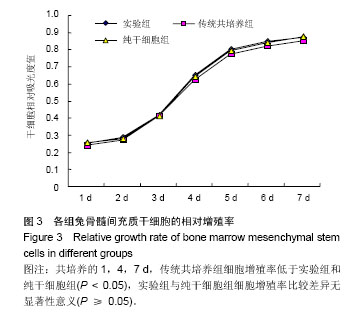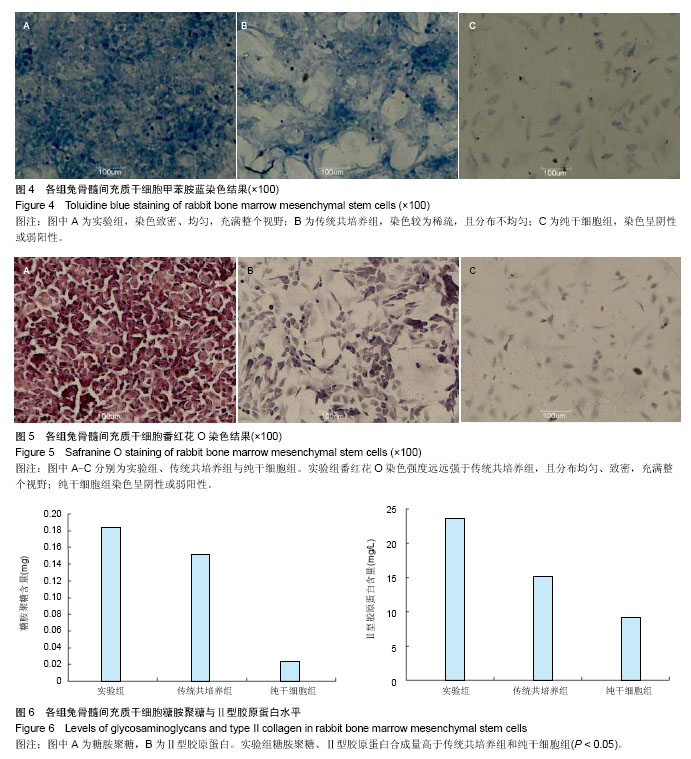| [1] Kang N,Liu X,Guan Y,et al.Effects of co-culturing BMSCs and auricular chondrocytes on the elastic modulus and hypertrophy of tissue engineered cartilage. Biomaterials.2012; 33(18):4535-4544.
[2] Zhang L,He A,Yin Z,et al.Regeneration of human-ear-shaped cartilage by co-culturing human microtia chondrocytes with BMSCs.Biomaterials.2014;35(18):4878-4887.
[3] Fahy N,Farrell E,Ritter T,et al.Immune Modulation to Improve Tissue Engineering Outcomes for Cartilage Repair in the Osteoarthritic Joint.Tissue Eng Part B Rev.2014[Epub ahead of print].
[4] Yang Z,Zhu L,Li F,et al.Bone marrow stromal cells as a therapeutic treatment for ischemic stroke.Neurosci Bull. 2014; 30(3):524-534.
[5] Ye ZL,Hou XX,Chen RL,et al.Effects of methylthiouracil on the proliferation and apoptosis of rat bone marrow stromal cells. Exp Ther Med.2014;7(6):1738-1744.
[6] Zheng L,Yang J,Fan H,et al.Material-induced chondrogenic differentiation of mesenchymal stem cells is material- dependent. Exp Ther Med.2014;7(5):1147-1150.
[7] Geiger F,Beverungen M,Lorenz H,et al.Bone Substitute Effect on Vascularization and Bone Remodeling after Application of phVEGF165 Transfected BMSC.J Funct Biomater. 2012; 3(2): 313-326.
[8] 刘洋,于滨滨,王为,等.微囊化共培养诱导骨髓间充质干细胞体外定向成骨分化研究[J].高校化学工程学报,2010,24(6):993- 999.
[9] Lim F,Sun AM.Microencampsulated islet as bioartifical endocrine pancreas. Science.1980;210(4472):908-910.
[10] De Vos P,van Hoogmoed CG,van Zanten J,et al.Long-term biocompatibility, chemistry, and function of microencapsulated pancreatic islets.Biomaterials.2003;24(2):305-312.
[11] Yoshioka Y,Suzuki R,Oka H,et al.A novel cytomedical vehicle capable of protecting cells against complement.Biochem Biophys Res Commun.2003;305(2):353-358.
[12] Hasse C,Schrezenmeir J,Stinner B,et al.Successful allotransplantation of microencapsulated parathyroids in rats.World J Surg.1994;18:630-634.
[13] Gomez N,Balladur P,Calmus Y,et al.Evidence for survival and metabolic activity of encapsulated xenogeneic hepatocyts transplanted without immunosuppression in Gunn rats. Transplantation.1997;63(12):1718-1723.
[14] Aebischer P,Tresco PA,Sagen J,et al.Transplantation of microcapsulated bovine chromaff in cells reduces lesiorr induced rotational asymmetry in rats. Brain Res.1991;560: 43-49.
[15] Inaba K,Zhou D,Yang B,et al.Normalization of diabetes by xenotransplantation of cryopreserved microencapsulated pancreatic islets. Application of a new strategy in islet banking. Transplantation.1996;61(2):175-179.
[16] Hang H,Shi X,Wu Y,et al.In vitro analysis of cryopreserved alginate-poly-L-lysine-alginate-microencapsulated human hepatocytes.Liver Int.2010;30(4):611-622.
[17] 张晨,王坤正,强辉,等.兔骨髓基质干细胞的体外培养及生物学活性研究[J].西安交通大学学报:医学版,2010,31(2):138-142.
[18] Craft AM,Ahmed N,Rockel JS,et al.Specification of chondrocytes and cartilage tissues from embryonic stem cells.Development.2013;140(12):2597-2610.
[19] Cheverud JM,Lawson HA,Bouckaert K,et al.Fine-mapping quantitative trait loci affecting murine external ear tissue regeneration in the LG/J by SM/J advanced intercross line. Heredity (Edinb).2014 ;112(5):508-518.
[20] Strong AL,Jiang Q,Zhang Q,et al.Design, synthesis, and osteogenic activity of daidzein analogs on human mesenchymal stem cells. ACS Med Chem Lett. 2013;5(2): 143-148.
[21] Calloni R,Cordero EA,Henriques JA,et al.Reviewing and updating the major molecular markers for stem cells.Stem Cells Dev.2013;22(9):1455-1476.
[22] Nagamoto Y,Tashiro K,Takayama K,et al.The promotion of hepatic maturation of human pluripotent stem cells in 3D co-culture using type I collagen and Swiss 3T3 cell sheets. Biomaterials.2012;33(18):4526-4534.
[23] Xing Y,Lv A,Wang L,et al.The combination of angiotensin II and 5-azacytidine promotes cardiomyocyte differentiation of rat bone marrow mesenchymal stem cells.Mol Cell Biochem. 2012;360(1-2):279-287.
[24] Tomaro-Duchesneau C1,Saha S,Malhotra M,et al.Probiotic Ferulic Acid Esterase Active Lactobacillus fermentum NCIMB 5221 APA Microcapsules for Oral Delivery: Preparation and in Vitro Characterization.Pharmaceuticals (Basel). 2012;5(2): 236-248.
[25] Schneider S,Klein HH.Long-term graft function of cryostored alginate encapsulated rat islets.Eur J Med Res.2011;16(9): 396-400.
[26] Park SJ,Shin S,Koo OJ,et al.Functional improvement of porcine neonatal pancreatic cell clusters via conformal encapsulation using an air-driven encapsulator.Exp Mol Med.2012;44(1):20-25.
[27] Zhang Y,Wang W,Xie Y,et al.Optimization of microencapsulated recombinant CHO cell growth, endostatin production, and stability of microcapsule in vivo.J Biomed Mater Res Part B: Appl Biomater.2008;84(1):79-88.
[28] 刘洋,刘天庆,范秀波,等.旋转壁式生物反应器中微囊化骨髓间充质干细胞支持造血干/祖细胞的体外扩增[J].高校化学工程学报, 2008,22(3):471-477.
[29] Vériter S,Mergen J,Goebbels RM,et al.In vivo selection of biocompatible alginates for islet encapsulation and subcutaneous transplantation.Tissue Eng Part A.2010;16(5): 1503-1513.
[30] Kerby A,Bohman S,Westberg H,et al.Immunoisolation of islets in high guluronic acid barium-alginate microcapsules does not improve graft outcome at the subcutaneous site.Artif Organs.2012;36(6):564-570. |



.jpg)